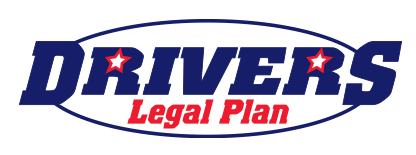Free Consultation
Contact Drivers Legal Plan
by submitting this form

If you're working toward earning your Commercial Driver's License (CDL), you're on the right path for an in-demand career in the trucking industry. Before you get behind the wheel, there are three steps you'll need to complete:
Choosing the right CDL training program is one of the most important decisions you'll make on your journey to becoming a professional driver. The quality of your education will directly impact your ability to pass the CDL test, your confidence behind the wheel, and your long-term career opportunities.
Not all CDL schools are created equal—so it pays to do your homework. Here's what to look for before enrolling:
Start by ensuring the school is licensed by your state's DMV or DOT and listed on the FMCSA's Training Provider Registry (TPR)—which is required for Entry-Level Driver Training (ELDT). Look for positive student reviews, approval for GI Bill® funding, and a clean record with the Better Business Bureau.
A good program should offer a well-rounded curriculum that meets or exceeds ELDT requirements. You’ll want both theory and behind-the-wheel (BTW) training, with enough driving hours to build real experience. Make sure they provide training on the type of vehicle you’ll be operating—whether Class A or Class B—and cover both manual and automatic transmissions, if needed.
Qualified, CDL-certified instructors are essential. Ask about the student-to-instructor ratio and whether you’ll receive individualized coaching during your training.
The trucks should be modern, well-maintained, and similar to those used in today’s industry. Range and road training areas should be safe and practical, and classrooms should be equipped for modern instruction.
Look for programs that offer full-time or part-time options, including weekend or evening classes. Most programs last between 3 to 8 weeks, but flexibility is key if you’re balancing work or family responsibilities.
Be sure you understand the full cost of tuition, what’s included (books, DOT physical, etc.), and whether payment plans or tuition reimbursement are available. Ask about job placement assistance with carriers who hire new graduates.
Take a tour, meet the instructors, and talk to current students. You're not just choosing a school—you're investing in your future. Make sure it’s the right fit for your goals.
This is the next hurdle to earning your CDL. The General Knowledge Test covers the basics of safe driving, vehicle inspection, traffic laws, and regulations. It's designed to ensure you understand the fundamentals of operating a commercial vehicle. Here's how it works:
Once you pass, you'll be issued a Commercial Learner's Permit (CLP), which allows you to begin practicing behind the wheel—with a licensed CDL driver present. You must hold your CLP for at least 14 days before you're eligible to take the road test.
Pro Tip: Tests vary between states. Make sure you are studying the materials for the state in which you reside.
After holding your CLP for at least two weeks, you'll be eligible to schedule your skills test, which is where you show what you've learned behind the wheel. The skills test consists of three parts:
Important: You must take the skills test in the same type of vehicle you plan to drive professionally.
Before taking your skills test, you'll need to provide documentation to verify your identity and residency. Each DMV may vary slightly, but in general, you'll need:
Some DMVs require appointments for the test, while others accept walk-ins. Check with your local DMV ahead of time so you're not caught off guard.
Most general knowledge exams include about 50 questions, though the number can vary depending on state regulations and whether you're testing for additional endorsements like hazmat or passenger vehicles.
Most full-time programs last 3 to 8 weeks. These programs blend classroom education with behind-the-wheel training to fully prepare you for both the written and driving tests. Part-time programs can stretch for several months.
Costs vary by state and school. For the most accurate pricing, check with your local DMV and nearby training schools.

Contact Drivers Legal Plan
by submitting this form